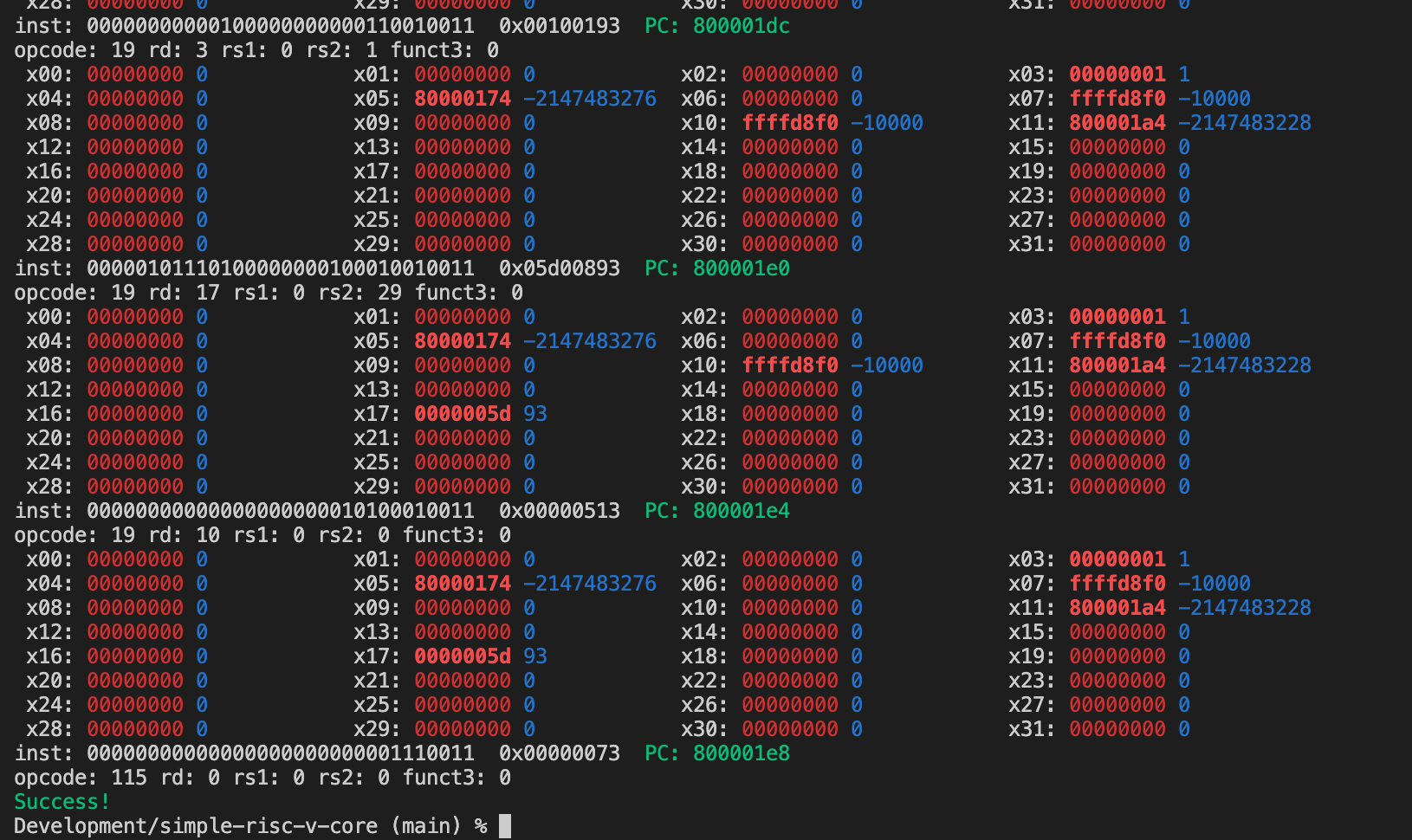A RISC-V core written in C and then in Verilog. The aim of this project is to progressively learn more about the RISC-V ISA, learn Verilog and HDL in general, and more about how CPUs are implemented in hardware.
In the project root, download and compile the riscv-tests:
$ git clone https://github.com/riscv/riscv-tests
$ cd riscv-tests
$ git submodule update --init --recursive
$ autoconf
$ ./configure
$ make
This will compile the ISA tests into individual ELF files. These ELF file can be run as described below.
$ make
$ make test
$ ./riscv-core riscv-tests/isa/rv32ui-p-add
To print out current register values before each step run with -r option:
$ ./riscv-core riscv-tests/isa/rv32ui-p-add -r
The Verilog version needs to load initial memory state from an ascii hex dump. You can generate this file by passing -h flag when running the C version. For example:
$ ./riscv-core riscv-tests/isa/rv32ui-p-add -h
Will load the ELF file into memory then dump the memory to a hex file located at verilog/tests/rv32ui-p-add.hex. That file can then be run on the Verilog version as described below.
$ cd verilog
$ make
$ make test
The Verilog version loads each tests from a a hex dump in /verilog/tests/. These files are checked in but can be regenerated by running the C version, as descibed above.
$ cd verilog
$ vvp -n core_tb +MEM=tests/rv32ui-p-add.hex
Output will look similar to the C version. The -n flag will cause vvp to exit with a non-zero exit code if the test fails (rather than drop into the interactive mode).
- RISC-V tests: https://github.com/riscv-software-src/riscv-tests
- Simple ELF loading library: https://github.com/0intro/libelf (forked)
